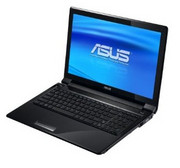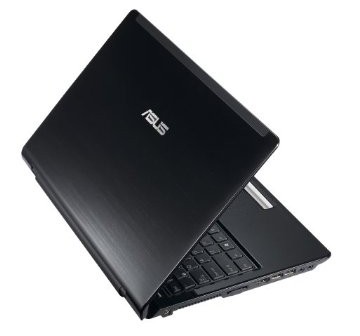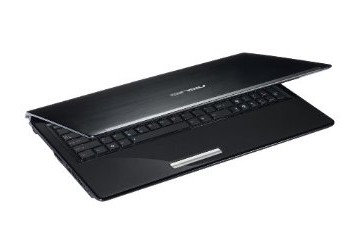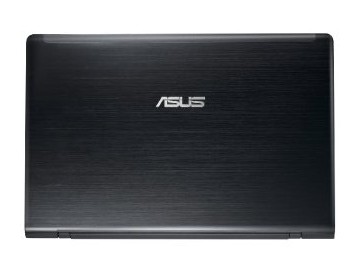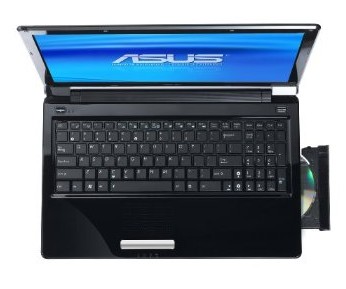Asus UL50VS
Specifiche tecniche
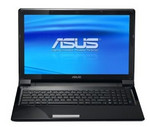
Price comparison
Media dei 3 punteggi (dalle 5 recensioni)
recensioni per Asus UL50VS
Sorgente: V3.co.uk
 EN→IT Archive.org version
EN→IT Archive.org versionA decent 15.6in screen notebook with CPU overclocking, but grainy display and high price tag could put off some buyers. The UL50vs is a decent 15.6in screen notebook with slight CPU overclocking capabilities, a nice aesthetic finish, and good graphical display capabilities that the majority of people will find acceptable. However, there are flaws, such as the keyboard being off centre and the resolution of the screen not being anywhere near its potential.
Singola recensione, disponibile online, Corto, Data: 01/12/2010
Valutazione: Punteggio totale: 60%
Sorgente: Channel Web
 EN→IT Archive.org version
EN→IT Archive.org versionA decent 15.6in screen notebook with CPU overclocking, but grainy display and high price tag could put off some buyers. The UL50vs is a decent 15.6in screen notebook with slight CPU overclocking capabilities, a nice aesthetic finish, and good graphical display capabilities that the majority of people will find acceptable. However, there are flaws, such as the keyboard being off centre and the resolution of the screen not being anywhere near its potential.
Singola recensione, disponibile online, Medio, Data: 01/12/2010
Valutazione: Punteggio totale: 60%
Sorgente: Computing
 EN→IT Archive.org version
EN→IT Archive.org versionA decent 15.6in screen notebook with CPU overclocking, but grainy display and high price tag could put off some buyers. The UL50vs is a decent 15.6in screen notebook with slight CPU overclocking capabilities, a nice aesthetic finish, and good graphical display capabilities that the majority of people will find acceptable. However, there are flaws, such as the keyboard being off centre and the resolution of the screen not being anywhere near its potential.
Singola recensione, disponibile online, Medio, Data: 01/12/2010
Valutazione: Punteggio totale: 60%
Sorgente: Hispazone
 ES→IT Archive.org version
ES→IT Archive.org versionSingola recensione, disponibile online, Medio, Data: 11/27/2009
Valutazione: prestazioni: 90% mobilità: 80%
Sorgente: CDR-Hard
 CZ→IT Archive.org version
CZ→IT Archive.org versionSingola recensione, disponibile online, Lungo, Data: 01/18/2010
Valutazione: prezzo: 80% prestazioni: 60% schermo: 40% mobilità: 80% emissioni: 80%
Commenti
NVIDIA GeForce G210M: La Nividia GeForce G210M o G 210 M è una scheda grafica DirectX 10.1 per portatili che si basa sul core GT218. Come il suo predecessore, sfrutta 16 shaders ma il clock rates è stato notevolmente incrementato. Grazie alla realizzazione in 40nm (rispetto ai 55nm della G110M) il consumo massimo di energia resta invariato.
Soltanto i giochi datasi possono essere giocati in modo fluido con questi chips grafici (se non richiedono troppe prestazioni). I cores con memoria grafica condivisa in questa categoria hanno il vantaggio delle minori emissioni di calore e della maggiore autonomia della batteria. Per ufficio, internet, image processing, e video editing queste schede grafiche sono utilizzabili senza particolari problematiche.
>> Ulteriori informazioni le potete trovare nel nostroConfronto delle schede grafiche e nella nostra Lista dei Benchmark.
Intel Core 2 Duo: Questo è il successore del Core Duo e del Core Solo con una pipeline più lunga ed il 5-20% di velocità in più senza avere maggiore consumo di energia. Come aggiunta al design del Core Duo esiste un quarto decoder, una unità amplificata SSE ed una unità logica aritmetica (ALU) addizionale. Il Core 2 Duo per portatili è identico al processore per desktop Core 2 Duo ma il processore per portatili lavora con un voltaggio inferiore (0.95 a 1188 Volt) ed un Frontside bus clock inferiore (1066 vs 667 MHz). Le prestazioni di portatili con clock equivalenti sono inferiori del 20-25% rispetto ai PCs Desktop a causa del Frontside bus clock inferiore e agli hard disks più lenti.
SU7300: Processore dual core con clock lento e con un basso TDP da 10 Watt.
>>Ulteriori informazioni le potete trovare nel nostroConfronto dei processori per portatili.




